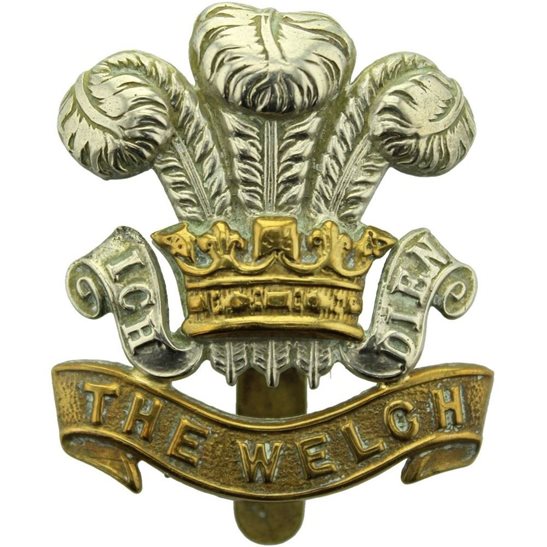Personal Details
Born: 16 November 1898 in Whitchurch, Shropshire.
Family: He was the elder of two children born to Ernest George Wisdom, a domestic butler, and his wife Elizabeth, nee Powell. He married Elizabeth Robinson in 1929 in Wem, Shropshire. The couple had a daughter, Sheila Elizabeth born in 1940.
Residence: In 1901 he and his parents were living at 17 Bark Hill, Whitchurch. By 1911 they had moved to Fountain House, Sedgeford, Whitchurch. The address given for Bernard on the 1919 Absent Voters` List was 2 Sedgeford, Whitchurch. In 1939 he was living with his wife at 66 Wrexham Road, Whitchurch; this continued to be his home until his death in 1963.
Education: From 19 September 1912 until 7 May 1914 he attended Whitchurch Boys` Grammar School.
Employment: He was a letterpress printer.
Died: 17 November 1963 at Deermoss Hospital, Whitchurch and buried 21 November the same year in Whitchurch Cemetery, aged 65.
Military Details
Regiment: Welsh Regiment
Rank: Private
Service Number: 61289
Date of Enlistment: Not known
Date of Discharge: Not known
Reason for Discharge: Not known
Bernard was awarded the Campaign Medals (British War medal and Victory Medal)

The British War Medal (also known as 'Squeak') was a silver or bronze medal awarded to officers and men of the British and Imperial Forces who either entered a theatre of war or entered service overseas between 5th August 1914 and 11th November 1918 inclusive. This was later extended to services in Russia, Siberia and some other areas in 1919 and 1920. Approximately 6.5 million British War Medals were issued. Approximately 6.4 million of these were the silver versions of this medal. Around 110,000 of a bronze version were issued mainly to Chinese, Maltese and Indian Labour Corps. The front (obv or obverse) of the medal depicts the head of George V. The recipient's service number, rank, name and unit was impressed on the rim.
The Allied Victory Medal (also known as 'Wilfred') was issued by each of the allies. It was decided that each of the allies should each issue their own bronze victory medal with a similar design, similar equivalent wording and identical ribbon. The British medal was designed by W. McMillan. The front depicts a winged classical figure representing victory. Approximately 5.7 million victory medals were issued. Interestingly, eligibility for this medal was more restrictive and not everyone who received the British War Medal ('Squeak') also received the Victory Medal ('Wilfred'). However, in general, all recipients of 'Wilfred' also received 'Squeak' and all recipients of The 1914 Star or The 1914/1915 Star (also known as 'Pip') also received both 'Squeak' and 'Wilfred'. The recipient's service number, rank, name and unit was impressed on the rim.

